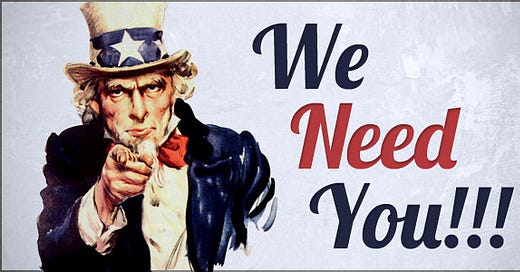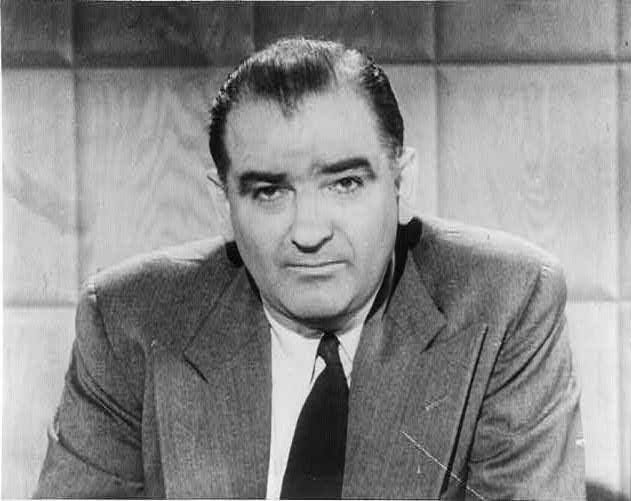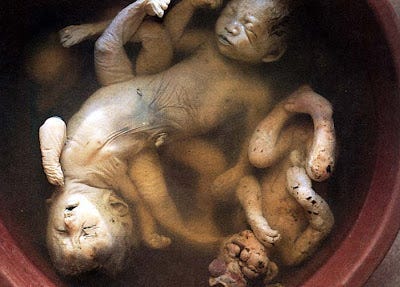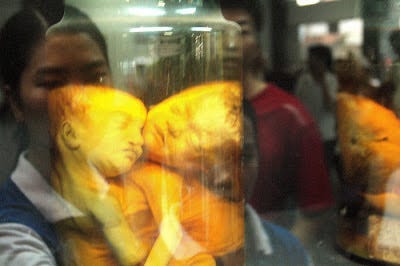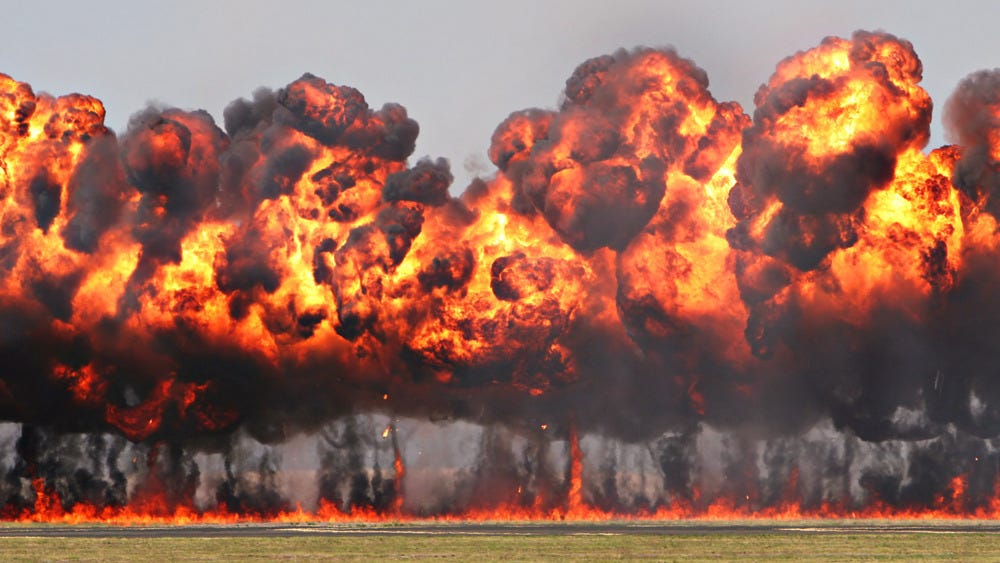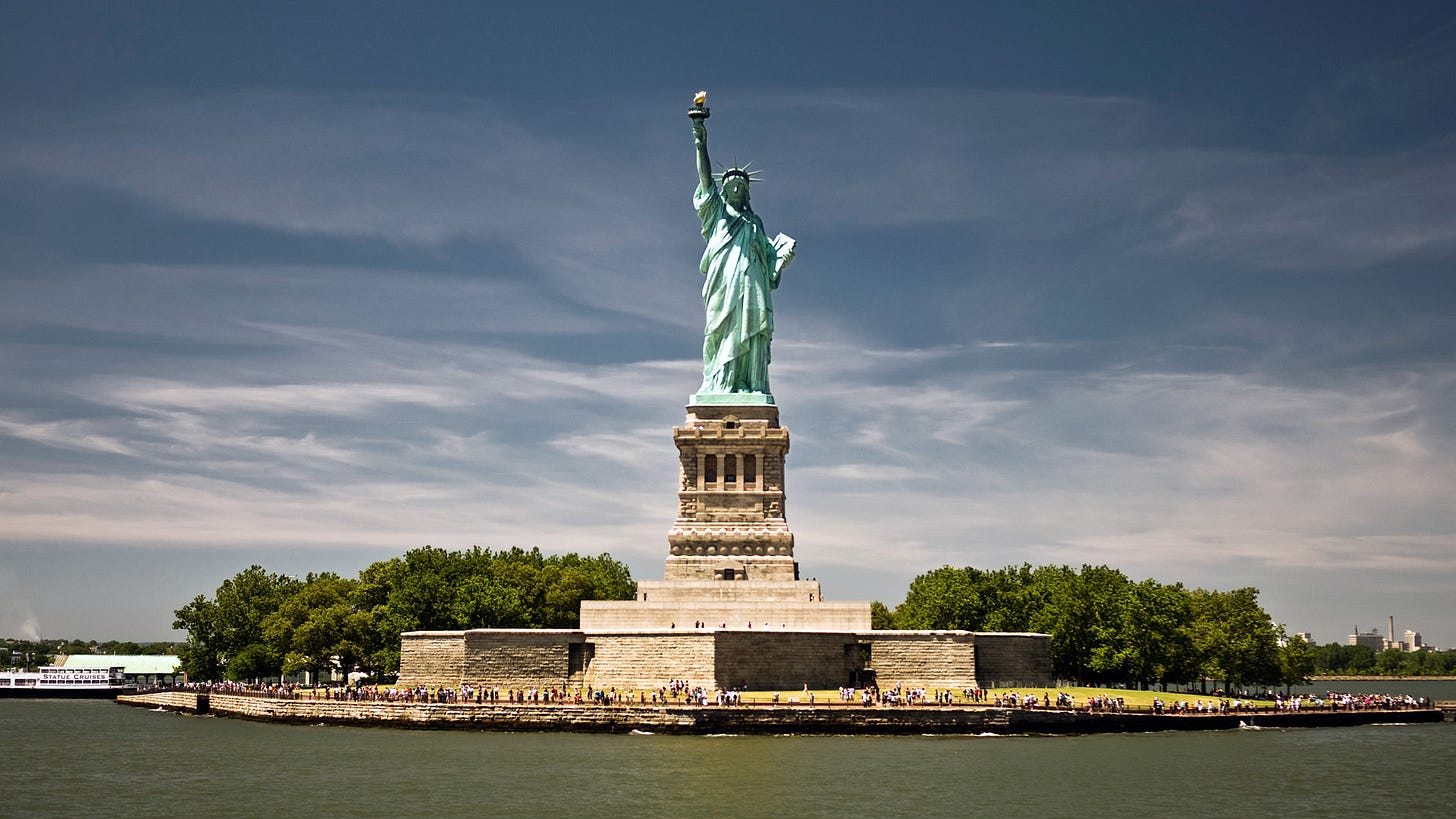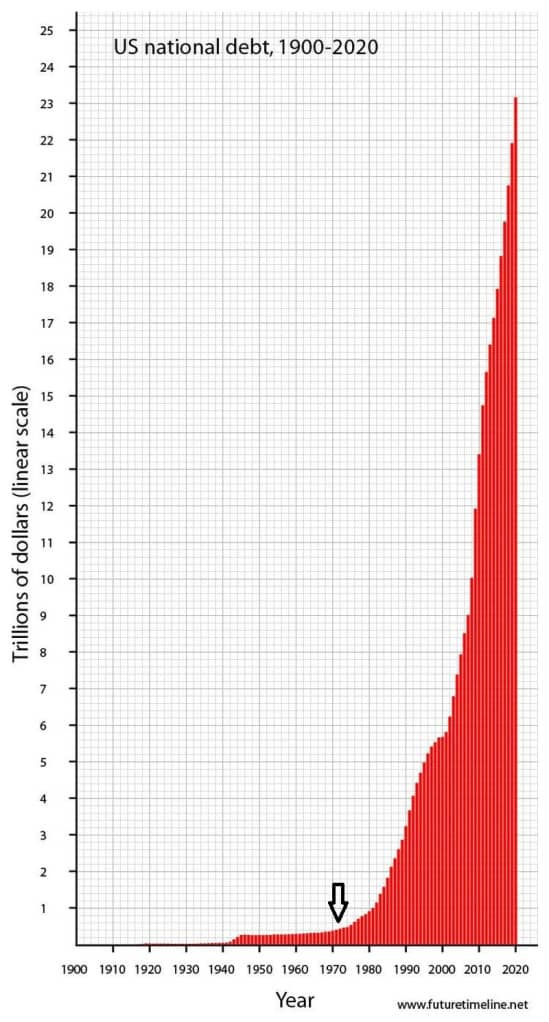In this second part, I pick up again on the Korean War, how it started and finished, and the events that followed.
The US was unprepared for war in Korea. Since the end of WW2, it had cut back on its conventional military forces to build up a nuclear capability. With sights firmly set on Moscow, Korea was effectively blindsided. The North almost succeeded in fully occupying the south as intervening US forces were pushed back by the Korean People's Army (KPA). However the KPA was stretched and poorly supported. In the end, allied air and naval power pushed back KPA forces. The war ultimately ended up in a stalemate. This left a legacy of widespread destruction. The US had engaged in a devastating scorched earth bombing campaign in the north, detailed here in this article, The Destruction and Reconstruction of North Korea, 1950 – 1960, from the Asia-Pacific Journal. It was estimated that the destruction inflicted on North Korea was greater than that of Japan in WW2. The US also used napalm in the conflict. The article notes:
The act which inflicted the greatest loss of civilian life in the Korean War by far, one which the North Koreans have claimed ever since was America’s greatest war crime, was the aerial bombardment of North Korean population centers.
Indeed:
For the Americans, strategic bombing made perfect sense, giving advantage to American technological prowess against the enemy’s numerical superiority. The American command dismissed British concerns that mass bombardment would turn world opinion against them, insisting that air attacks were accurate and civilian casualties limited.
There’s no doubt that the impact of the war is still felt in North Korea today, and this is why the country became a nuclear power, harbouring a deep suspicion of the west. As the article notes:
The long-term psychological effect of the war on the whole of North Korean society cannot be overestimated. The war against the United States, more than any other single factor, gave North Koreans a collective sense of anxiety and fear of outside threats that would continue long after the war’s end.
The article goes on to document how North Korea made a rapid economic recovery after the war, with assistance from China, and the USSR.
Technically the war never officially ended, as this National Geographic article outlines. On July 27, 1953, North Korea, China, and the US signed the armistice agreement. South Korea though rejected the agreement, as such, a formal peace treaty was never concluded. The article also notes the legal ambiguities, discussed in Part 1:
The U.S. pressed the newly created United Nations Security Council to authorize the use of force to aid South Korea, and President Harry Truman committed troops to the cause—without seeking the approval of Congress, which alone has the power to declare war. It was the first time the United States entered a large-scale foreign conflict without an official declaration of war.
“We are not at war,” Truman told the press on June 29, 1950. “[South Korea] was unlawfully attacked by a bunch of bandits which are neighbors of North Korea.” Despite questions about whether Truman overstepped presidential authority, U.S. involvement in the conflict was officially chalked up to a “police action.”
Following the armistice, a 2.5-mile-wide Demilitarized Zone (DMZ) was established in 1953 as a buffer zone between north and south, stretching the length of the 38th parallel. It still remains today, with high security on both sides. The article sums up:
while the Korean War has largely faded in the memories of Americans—overshadowed by World War II and the Vietnam War—the precedent set by Truman’s actions in Korea has been used by U.S. presidents as justification for military interventions in Vietnam, Iraq, and Afghanistan, and UN missions in Bosnia and Haiti. The first-of-its-kind decision has been debated ever since. Undeclared, unresolved, and largely unremembered, the war’s unsettling legacy lives on.
McCarthyism
The period that became associated with McCarthyism, followed what was known as the Second Red Scare. The paper, McCarthyism and the Second Red Scare, from the Oxford Research Encyclopedia of American History, unpacks the anticommunist hysteria that swept through the US during the post war era and beyond. The roots stem from the creation of the American Communist Party (CPUSA), which was established in 1919, and linked to a Moscow based entity called Comintern:
which provided funding and issued directives, ostensibly to encourage Communist revolutions around the world but in practice to support Soviet foreign-policy objectives.
During the Great Depression, CPUSA appeal and support gained traction with a disillusioned working class. They then took an anti-fascist stance against the rise of fascism in Germany and Spain. The Party saw parallels here to what was happening at home, with violent suppression and anti-union manoeuvrers against workers.
In August 1939, the USSR and Germany signed a nonaggression pact. This was when the Party’s links to Moscow was exposed. The ‘Popular Front’ that had been building then began to dissipate. However the pact fell apart with the German invasion of the Soviet Union.
With the end of WW2 and the outbreak of the Cold war, the CPUSA became increasingly marginalised, particularly in 1956, when Stalin’s role in mass atrocities was revealed by the Kremlin. As the paper notes:
As the historian Ellen Schrecker has observed, American Communists were neither devils nor saints. The party’s secretiveness, its authoritarian internal structure, and the loyalty of its leaders to the Kremlin were fundamental flaws that help explain why and how it was demonized. On the other hand, most American Communists were idealists attracted by the party’s militance against various forms of social injustice. The party was a dynamic part of the broader Left that in the 1930s and 1940s advanced the causes of labor, minority rights, and feminism.
The first red scare emerged at the end of WW1, during widespread strikes. Mail bombings also took place, which was linked to anarchists. This was seen as evidence of a revolutionary conspiracy, no doubt influenced by the Russian revolution. It was during this period that a young J. Edgar Hoover came to prominence, who was head of the General Intelligence Division of what became the FBI. He targeted and arrested radicals and deported anyone of foreign extraction. But:
The ensuing raids and surveillance activities violated civil liberties, and in 1924 the bureau was reined in. But Hoover became FBI director, a position he would hold until his death in 1972. Intensely anticommunist, and prone to associating any challenge to the economic or social status quo with communism, Hoover would be a key player in the second Red Scare.
After this, increasing legislation emerged at state level, with the aim of curbing ‘un-American’ activities. Rivalries increased between anticommunists and labour militants. In particular, ‘Charges of communism were especially common in response to labor protests by African Americans in the South and by Mexican Americans in the West’. Educational establishments were also monitored for radical activities from teachers and professors, with a call to ‘drop “un-American” books from the curriculum’. There was also a policy of using immigration law to prevent foreign-born radicals from entering the country.
This was the backdrop that led to the second Red Scare. By 1938, there were Conservative factions that disapproved of New Deal policies, thinking they were being driven by communists. So began moves to undermine labour protection. The Alien Registration Act of 1940 then came into force, which:
made it illegal to advocate overthrow of the government, effectively criminalizing membership in the Communist Party, and allowed deportation of aliens who ever had belonged to a seditious organization. Congressional conservatives also engineered passage of the 1939 Hatch Act, which prohibited federal employees from engaging in political campaigning and from belonging to any group that advocated “the overthrow of the existing constitutional form of government.” The law’s passage was driven by the first provision, which responded to allegations that Democratic politicians were using WPA [Works Progress Administration] jobs for campaign purposes. It was the Hatch Act’s other provision, however, that created a vital mechanism of the second Red Scare.
When WW2 gave way to the cold war, conspiracy theories of communist infiltration of the US government gained traction. Lists of subversive organisations were compiled and federal employees had to complete loyalty forms swearing they weren’t associated with listed organisations. The FBI became more involved with investigations, working with the House Un-American Activities Committee (HUAC). These activities only intensified with a combination of global events; the first nuclear test by the USSR; the communist takeover in China; and the outbreak of war in Korea. It was around this time that Senator Joseph McCarthy (R-Wisconsin), came to prominence in 1950, claiming that Communists had infiltrated the U.S. State Department. McCarthy’s influence intensified the loyalty process, which, over time, ‘often did lasting damage to employees’ economic security, mental and physical health, personal relationships, and civic participation’.
As the tenets of McCarthyism expanded, so did sensationalism. Suspicion penetrated other fields such as entertainment, education and the media. Some pleaded the 5th Amendment to avoid incrimination, but this usually ended up with blacklisting, on the basis there must be something to hide. Indeed a certain actor by the name of Ronald Reagan, ‘cooperated with HUAC by naming people they believed to be Communists’. Many accusations made during this period were unfounded. People found that being associated with civil causes, which generally had nothing to do with communism, could attract suspicion.
Over time, particularly following the election of a Republican administration led by President Dwight Eisenhower, McCarthy’s accusations began to strain credulity. Charges of disloyalty in the Army in April 1954 and the televised hearings that followed, exposed McCarthy, impacting his credibility:
In December the Senate censured McCarthy. A few months later, the FBI informant Harvey Matusow recanted, claiming that McCarthy and others had encouraged him to give false information and that he knew other ex-Communist witnesses, such as Elizabeth Bentley and Louis Budenz, to have done the same.
Changes in the Supreme Court followed leading to less cases going forward with some convictions being overturned. Moving into the 60s, the second Red Scare lost much of its momentum. But, as the paper notes:
The loyalty programs and blacklists wound down, but anticommunism remained a potent force through the 1960s and beyond. After court rulings limited the usefulness of state and national sedition laws against members of the Communist Party, FBI director Hoover launched the secret COINTEL program to monitor and disrupt Communists and others he deemed subversive.
Southern states still harboured racist connotations with communism, linking race reform to communism and charging ‘that “outside agitators” bent on subverting southern traditions were behind demands for integration and black voting rights’.
The Vietnam War
On August 2 1964, the USS Maddox was patrolling in international waters in the Gulf of Tonkin off the coast of North Vietnam. It was gathering intelligence on North Vietnamese activities. The destroyer was picked up by North Vietnamese torpedo boats, who then proceeded to launch torpedoes against the Maddox, in response to warning shots fired at the boats. The Maddox retreated and evaded the torpedoes. However two days later in stormy weather, sonars picked up what was thought to be multiple contacts. It became apparent later that the weather had affected readings. But these were reported at the time as possible attacks. Reconnaissance aircraft confirmed there was nothing in the vicinity. The captain sent further messages confirming the situation that there was no threat. However despite this, in the knowledge that no attack had taken place, the Linden Johnson administration made the decision to go on the offensive. This started the Vietnam war in what became known as the Gulf Of Tonkin incident.
Between 2005 and 2006, around 200 documents were declassified and released by the National Security Agency (NSA). These documents and tapes:
make clear that high government officials distorted facts and deceived the American public about events that led to full U.S. involvement in the Vietnam War.
Indeed:
the evidence suggests a disturbing and deliberate attempt by Secretary of Defense McNamara to distort the evidence and mislead Congress.
The evidence indicates that the attacks from the North Vietnamese torpedo boats was in response to covert US-backed commando attacks and intelligence-gathering missions along the North Vietnamese coast. This was Codenamed Operations Plan (OPLAN) 34A, planned by the Department of Defense, with support from the CIA, and executed by the South Vietnamese Navy. One of the documents released in 2005 was a study by NSA historian Robert J. Hanyok. It outlined how evidence was cherry picked to distort the truth. It has also been noted that Johnson had his eye on the next election and that that may have also played a role in going to war.
But well before these documents were released, there was a leak during the war. These were the Pentagon papers, officially titled the Report of the Office of the Secretary of Defense Vietnam Task Force, brought to light by Daniel Ellsberg. Ellsberg worked for the Pentagon. That gave him access to classified information. He circulated documents he had obtained with trusted contacts. In June 1971, the documents were initially released by the New York Times, then following a court embargo, some of the documents were sent to the Washington Post for publication. The cat was out the bag. Shockwaves reverberated through the incumbent Richard Nixon administration, as well as previous administrations, particularly Lynden Johnson’s. Eventually the publication of the papers were upheld in the Supreme Court under First Amendment rights. They revealed that the Vietnam war was a lost cause before it even started. But that didn’t stop the US from deliberately starting it.
In an attempt to discredit Ellsberg, a team of ex-FBI and CIA operatives broke into the office of Ellsberg’s psychiatrist, in an unsuccessful attempt to steal psychiatric records on him. Members of the team then subsequently became involved in a covert break-in into the Democratic National Committee Headquarters in the Watergate complex. The complex was bugged and monitored over a period of time. Nixon tried to cover up what was going on, but was eventually exposed in what became known as the Watergate Scandal (see below). This article from the New York Times (1996) outlines the background story. As the paper notes:
The Pentagon Papers prompted the first attempt ever made by the Federal Government to impose a prior restraint on the press in the name of national security.
It added:
the Constitution, in the Court's view, makes prior restraint impermissible even if there is some danger to national security.
The paper carries a succinct quote from Ellsberg:
"No matter how smart people are in the White House and the Pentagon, no matter how well intentioned, they can get into crazy and illegal activities. And once they're in, and these schemes begin to fail, you cannot count on them to have the moral courage to admit a mistake, to cut their losses, to throw in the towel, to get out."
In June 2011, the Pentagon Papers were released in full. They are reproduced in the US National Archives.
War Time Atrocities
As the US pursued it’s domino theory containment engagement in Vietnam, many war crimes were committed. One of the most documented was the My Lai massacre. My Lai was a small village that was encountered by the Americal Division. On March 16, 1968, the unit:
butchered 504 Vietnamese old men, women, children and babies. No military-aged men were killed. Only one weapon belonging to the Vietnamese was found.
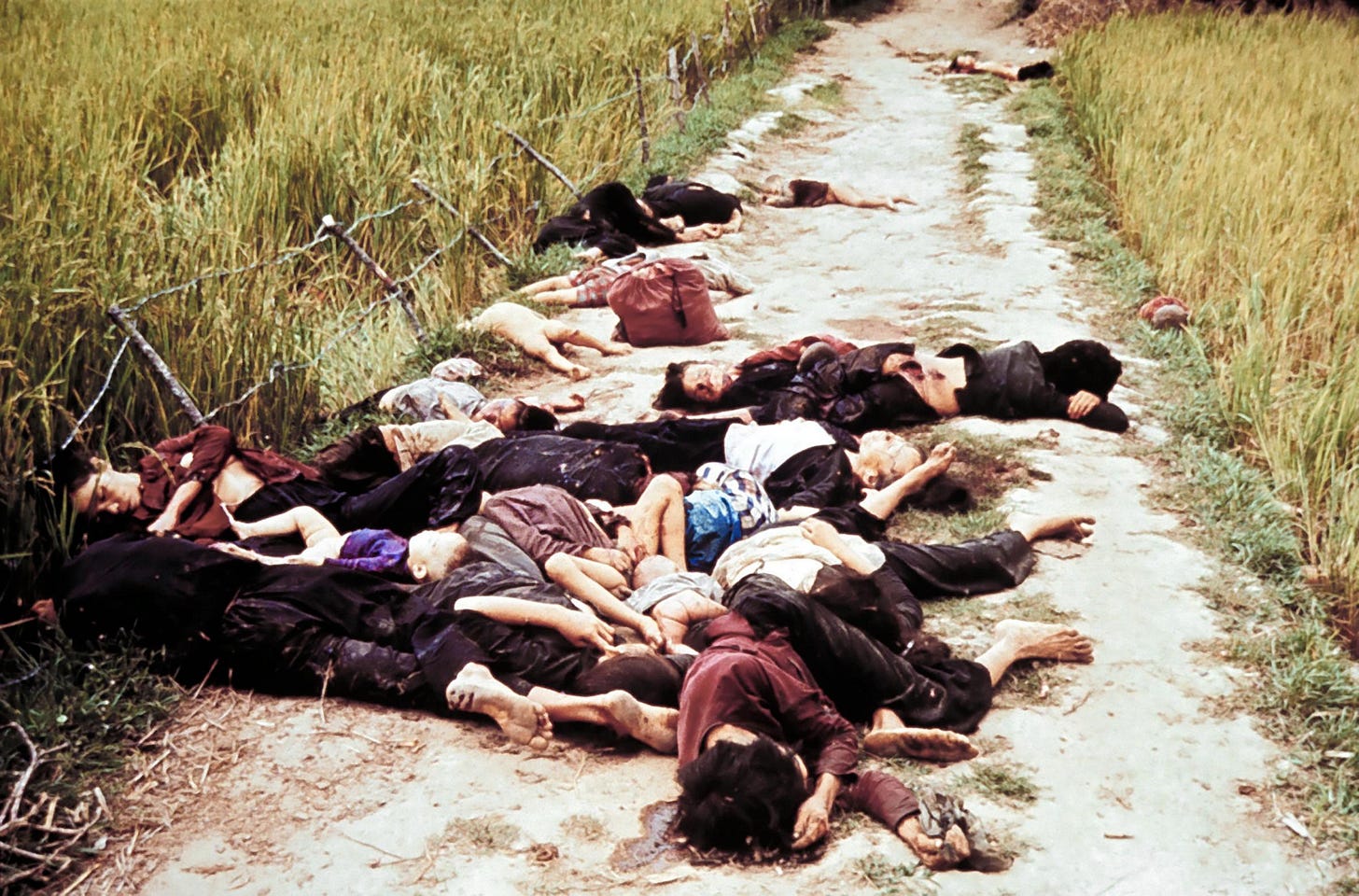
Following an extensive investigation into the cover up of the massacre by Lt. Gen. William R. Peers, he:
concluded that the massacre was a failure of leadership, from the commanding general on down. He concluded that 28 officers and enlisted men had committed war crimes – murder and rape – or conspired to cover up the crimes.
Nixon wouldn’t even allow Peers to call it a massacre. The massacre became, instead, “a tragedy of major proportions.”
One of the most egregious acts of the war was the widespread use of Agent Orange, a highly toxic herbicide. Manufactured and distributed mainly by the notorious Monsanto corporation (now Bayer), the company had close links with the US war effort continued during the Vietnam war. Monsanto’s version had much higher levels of dioxins compared to other producers. This is how the WHO defines dioxins:
Dioxins are a group of chemically related compounds that are persistent environmental pollutants (POPs).
Dioxins are found throughout the world in the environment and they accumulate in the food chain, mainly in the fatty tissue of animals.
More than 90% of human exposure is through food, mainly meat and dairy products, fish and shellfish. Many national authorities have programmes in place to monitor the food supply.
Dioxins are highly toxic and can cause reproductive and developmental problems, damage the immune system, interfere with hormones and cause cancer.
All people have background exposure to dioxins, which is not expected to affect human health. However, due to the highly toxic potential, efforts are needed to reduce current background exposure.
Prevention or reduction of human exposure is best done via source-directed measures, i.e. strict control of industrial processes to reduce formation of dioxins.
GMO Awareness noted that:
Internal Monsanto memos show that Monsanto knew of the problems of dioxin contamination of Agent Orange when it sold it to the U.S. government for use in Vietnam. Despite the widespread health impact, Monsanto and Dow were allowed to appeal for and receive financial protection from the U.S. government against veterans seeking compensation for their exposure to Agent Orange.
In 2012, a long 50 years after Agent Orange was deployed, the clean-up effort has finally begun. Yet the legacy of Agent Orange, and successive generations of body deformities, will remain in orphanages throughout VietNam for decades to come.
The legacy of the US spraying of the jungles around Vietnam is witnessed by the numerous birth defects still occurring today as depicted by these disturbing images:
It wasn’t just the Vietnamese that were affected by Agent Orange, US military veterans were also exposed, resulting in birth defects in their own offspring. This article from Science goes into the issue in more depth. Research had shown that soils and aquatic sediments had been heavily contaminated in some areas. As the article noted:
The Vietnam War marked the biggest deployment of herbicidal warfare the world has ever seen. Between 1961 and 1971, lumbering aircraft sprayed an estimated 74 million liters of the chemicals over South Vietnam as well as border areas of Laos and Cambodia. The goal was to strip foliage from mangrove swamps and dense forests that were providing cover for North Vietnamese and Viet Cong troops, and to destroy crops they relied on for food.
At the time it was thought the chemicals were harmless to people. Military personnel did not use personal protection of any form. However in the late 1960s it became apparent that the chemical produced a highly toxic dioxin (TCDD), which caused abnormalities and stillbirths in mice. As a result, spraying stopped four years before the war ended. But:
Unlike the herbicide itself, which decomposes within hours to days, TCDD can survive up to 3 years in soil that is exposed to sunlight. If leached into river or pond sediment, it can have a half-life of more than 100 years—more than enough time to be picked up by fish, ducks, and other animals that people eat. (People can also inhale contaminated dust and absorb dioxin through the skin.) Once in the human body, dioxin can lodge in breast and other fatty tissue and have a half-life of 7 to 11 years. It can also contaminate breast milk and be passed to breastfeeding babies.
However despite apparent links with birth defects, it has been difficult to conduct long term trials and studies on people exposed to the chemicals and subsequent generations because of the “extremely political” nature of the issue.
April of this year (2025), marked the 50th anniversary of the US capitulation from the war, known as the Fall of Saigon. As the article sums up, ‘even 50 years on, Agent Orange casts a dark shadow over Vietnam’.
Another agent that was widely used in the war was napalm, which was also used in Korea. This article notes that it was first used towards the end of WW2, contributing to the firebombing of Berlin and Tokyo. It was initially used in flame throwers. But Napalm bombs were subsequently developed. The article notes:
Among the US public, napalm became the symbol of all that was abhorrent about the war in Vietnam. The Vietnam war was the first conflict to be widely broadcast on television, though it was well known that the weapon had been used in the Pacific and in Korea, its effects had never before been seen so directly by the public.
Napalm was produced by Dow Chemicals. It was eventually banned in 1980:
the United Nations Convention on Certain Conventional Weapons (CCWC) declared the use of napalm against concentrations of civilians a war crime. A number of countries did not sign this protocol which entered the canon of international law in 1983.
The United States signed up to the Convention approximately 25 years after the General Assembly adopted it, on 21 Jan 2009: President Barack Obama’s first full day in office. Their ratification, however, is subject to a reservation that says it can disregard the treaty at its discretion if doing so would save civilian lives.
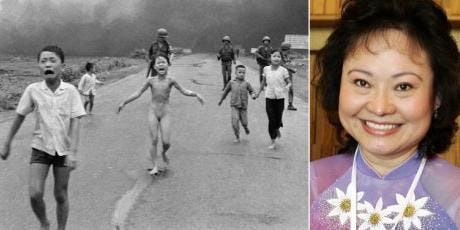
Another operation that took place during the war was the Phoenix Program, which was instigated by the CIA. It was a sweeping program of kidnap, torture, and assassination devised to undermine the Viet Cong. Most of the victims were innocent civilians suspected of harbouring information about the enemy. This article from Counterpunch goes into the sordid background of the operation. The crux of the story is that leading up to the instigation of the Phoenix Program, the CIA was conducting an illegal war in Vietnam that involved the murder and assassination of anyone remotely resembling the enemy. By then it had built up a network of secret interrogation centres. This involved the systematic torture of Viet Cong prisoners. As a result, ‘the VCI suspect would die or give the name and location of his VCI comrades and superiors’. Any information would lead to the dispatchment of assassination squads, who would target specific people and anyone else who happened to be in the wrong place at the wrong time. The article notes:
By 1969 the CIA, through Phoenix, was targeting individual VCI and their families all across Vietnam. Over 20,000 people were assassinated by the end of the year and hundreds of thousands had been tortured in Province Interrogation Centers.
However the operations began to worry some in Congress. Following an investigation in 1970, there was a conclusion that the Phoenix Program violated international law. But the whole process was denied:
the American establishment and media denied it then, and continue to deny it until today, because Phoenix was a genocidal program — and the CIA officials, members of the media who were complicit through their silence, and the red-blooded American boys who carried it out, are all war criminals.
The article makes this point:
Phoenix, alas, also was fiendishly effective and became a template for future CIA operations. Developed in Vietnam and perfected with the death squads and media blackout of Afghanistan and El Salvador, it is now employed by the CIA around the world: in Colombia, in Kosovo, in Ireland with the British MI6, and in Israel with its other kindred spirit, the Mossad.
The My Lai Massacre was conducted under the Phoenix Program. The article calls for a war crimes tribunal. But this won’t happen:
The US government has gone to great lengths to shield itself from such legal scrutiny, at the same it selectively manipulates international institutions, such as the UN, to go after people like Slobodan Milosevic.
In 1995, US-Vietnam relations were normalised. The country is now strategically important to the US, especially given the geopolitical situation with China. But the legacy of the war still remains to a certain extent, particularly through Vietnam Syndrome, later known as Post-Traumatic Stress Disorder (PTSD). This affected many veterans returning home from the conflict, with many committing suicide and experiencing social problems.
The Civil Rights Movement
Throughout history, especially during the cold war, the US has projected itself as a bastion of freedom, liberty and democracy. The iconic symbol of this projection was the Statue of Liberty, which was gifted to the US by France on the centenary of US independence. It was made in Paris by French sculptor Bartholdi, in collaboration with Gustave Eiffel (of Eiffel Tower fame). Since 1886, it has stood at the entrance to New York Harbour on Ellis Island, and has welcomed immigrants to the US ever since.
These days though, immigration is discouraged - that’s another story (see here).
Behind the persona though is an entirely different reality. In the first part of this story, I documented the plight of the native Americans. But another group that has faced widespread discrimination is the African American community. Even back in days of the Declaration, apparently democracy only applied to whites. Many of the founding fathers were complicit in the slave trade, as this article notes:
we must grapple with the uncomfortable truth that the foundations of the United States were built, in part, on the backs of enslaved people.
Slavery was deeply entrenched in the American colonies long before the founding of the United States.
The key architects of the new America were slave holders:
at least 12 of the 55 delegates to the Constitutional Convention were slaveholders, including George Washington, Thomas Jefferson, James Madison, and James Monroe. These founding fathers, who played a pivotal role in the creation of the United States, were deeply complicit in the perpetuation of the institution of slavery.
The African American Civil Rights Movement website has documented the history of the Movement.
The Civil War (1861-1865) was a pivotal moment. It took place following the election of Abraham Lincoln on an anti-slavery mandate. This caused a fracture between north and south. After the war ended, the following decade was a period of reconstruction, with the enactment of the 13th, 14th, and 15th Amendments to the Constitution. These are respectively:
Abolished slavery and involuntary servitude, except as punishment for a crime. It was passed by Congress on January 31, 1865, and ratified on December 6, 1865; ratified in 1868, grants citizenship to all persons born or naturalized in the United States and ensures equal protection under the law, particularly for formerly enslaved individuals; ratified on February 3, 1870, prohibits the federal and state governments from denying a citizen's right to vote based on race, color, or previous condition of servitude.
Also enacted was the Civil Rights Act of 1866, which protected the rights of newly freed slaves. The Civil Rights Act of 1875 also came into force. But, as the Movement notes:
In 1883 the United States Supreme Court ruled the Civil Rights Act of 1875 unconstitutional.
The decision to overturn the act led to legalized discrimination and segregation, a set of laws known as Jim Crow.
The 1875 Act was deemed to violate the 14th Amendment. That:
Congress did not have the authority to prevent discrimination by private individuals and that individual businesses have the right to choose their own clientele. Victims of racial discrimination should seek support from the states and not from the Federal Government.
The term ‘Jim Crow’ originated from a racist play called “Jump, Jim Crow”, whereby a white actor assumed the role of a black slave, a sort of early version of the black and white minstrels. As the Movement notes:
Jim Crow laws originated from slave codes which prohibited slaves from learning how to read and write, gathering in groups for worship or bearing arms. Slave codes aimed at preserving slavery. Now that slaves were emancipated Southern states had to figure out how to safeguard previously free labor and keep them apart from their society.
The laws effected a form of apartheid in the South. It wasn’t until the 1960s that they were eventually overturned.
One of the key sparks for the civil rights movement was in 1955, when Rosa Parks refused to give up her seat in a segregated bus, re-enacted in this video.
Parks had been involved with the National Association for the Advancement of Colored People (NAACP). Founded in 1909 in New York City, its remit was:
“To promote equality of rights and to eradicate caste or race prejudice among the citizens of the United States; to advance the interest of colored citizens; to secure for them impartial suffrage; and to increase their opportunities for securing justice in the courts, education for the children, employment according to their ability and complete equality before law”.
Following her action, Parks was arrested and fined $14. This in turn sparked the Montgomery Bus Boycott, which drew in the influence of Martin Luther King Jr. The boycott lasted 381 days, whereby African Americans refused to ride the buses. It succeeded in bringing in desegregation on the buses in Montgomery, Alabama. Despite setbacks and violence, the boycott became a legal triumph and:
inspired other cities throughout the country and stimulated participation and activism. It also brought prominence to Martin Luther King Jr. who advocated for peaceful resistance.
The Space Race and the Watergate Scandal
When the USSR launched Sputnik on 4 October 1957, it probably caused the greatest dent in Uncle Sam’s ego in history. It precipitated the Sputnik crisis, which instilled fear that the US was falling behind the Soviets. The US had also been working on putting a satellite into orbit at the time. It sparked the space race and intensified the arms race, increasing cold war tensions. These tensions came to a head with the Cuban Missile Crisis in 1962. After a 13 day stand off, following a decision by the Soviets to install nuclear missiles in Cuba, an agreement was reached whereby the USSR would remove its presence from Cuba in exchange for a guarantee that the US would not invade Cuba. A secret deal was also agreed to remove US missiles from Turkey. The situation in Turkey remained in the dark at the time, obscuring the fact that the roots of the Crisis were effectively caused by the US itself. As this article from Jstor notes (emphasis added):
The U.S. weapons in Turkey were Jupiter intermediate-range ballistic missiles. They had been positioned in Turkey in 1961. The Jupiters, writes the historian Barton J. Bernstein, were “liquid-fuel I.R.B.M.s, taking hours to fire, quite inaccurate, very vulnerable, and hence only useful for a first strike, and thus provocative.” Turkey and the old U.S.S.R. shared a border, so the Soviets were already in the position the Americans interpreted as hostile a couple of years later: an enemy’s nuclear weapons at their doorstep.
The previous year the USSR had left the US in the cold again as Yuri Gagarin became the first person to journey into space. This prompted President John F. Kennedy to kickstart the project of sending an American to the Moon before the end of the decade. It took massive effort and expenditure to finally land Apollo 11 on the moon on July 20, 1969, with commander Neil Armstrong being the first to step onto the surface.
There was little doubt that the moon landing was fuelled by the cold war. It succeeded in giving the US considerable prestige at the time, especially during a period when the country at the time was being shaken by civil strife and the Vietnam war. It was President Richard Nixon that gave America the prestige it craved. It was also him that caused its spectacular collapse a few years later.
Watergate
I touched on watergate above. Given the shockwaves the scandal generated, it’s worth taking a deeper look at what happened. This article from History covers the background.
In the morning of June 17, 1972, several burglars were arrested in the office of the Democratic National Committee, located in the Watergate complex in Washington. They were members of Nixon’s Committee to Re-Elect the President (known derisively as CREEP). They had broke into the offices the previous month when they stole copies of top-secret documents and bugged the phones. Five had returned because the wiretaps had failed to work properly. But they left a trail:
As the prowlers were preparing to break into the office with a new microphone, a security guard noticed someone had taped over several of the building’s door locks. The guard called the police, who arrived just in time to catch them red-handed.
Nixon denied he had anything to do with the incident. He managed to convince the country and in November was elected by a landslide. But eventually the truth came out. His intention was to use the CIA to impede an FBI investigation into the affair:
a more serious crime than the break-in: It was an abuse of presidential power and a deliberate obstruction of justice.
Two journalists from the Washington Post, Bob Woodward and Carl Bernstein, blew the lid off the case. It transpired that that Nixon had secretly taped every conversation that took place in the Oval Office, with the conspirators. He was ordered to hand over the tapes. By this time some of the perpetrators had cracked under pressure, coupled by revelations from the Post, which had been provided by an informant called Deep Throat.
Finally it all came to the surface in 1974:
In July, the Supreme Court ordered Nixon to turn over the tapes. While the president dragged his feet, the House Judiciary Committee voted to impeach Nixon for obstruction of justice, abuse of power, criminal cover-up and several violations of the Constitution.
Finally, on August 5, Nixon released the tapes, which provided undeniable evidence of his complicity in the Watergate crimes. In the face of almost certain impeachment by Congress, Nixon resigned in disgrace on August 8, and left office the following day.
In 2005, it was revealed that ‘deep Throat’ was W. Mark Felt, a former associate director of the FBI. The debacle was featured in the book and feature film All the President’s Men.
Many at the highest level of office had been convicted. Watergate was an attempt to sideline Nixon’s enemies and to evade criticism linked to Vietnam. He had been elected following the failure of his predecessor on that issue. And to add insult to injury, his successor, Vice President Gerald Ford, pardoned Nixon and exonerated him of any crimes he had committed while in office. The following year, it all came to an ignominious end with the fall of Saigon.
Another key event in Nixon’s administration was the decision to end convertibility of the US dollar into gold. The decision made on the 15 August 1971, decoupled the dollar from the gold standard, marking the end of the the Bretton Woods system created in 1944 near the end of WW2, whereby the dollar became the de facto global currency pegged to gold. However as the global economy expanded, the dollar was increasingly used to fulfil global demand and supply, generating a degree of instability. And the US national debt was rising, causing inflation, rising unemployment, along with war debts. A run on gold could create further problems. Also Nixon had his eye on re-election. The decision marked the beginning of a global economy run on fiat currency, still pegged to the dollar. However there have been issues, as this article notes:
In the decades that followed economists and politicians realized that their unchecked power to issue new currency would allow them to manipulate the economy at an unprecedented level. This has led to widespread debasement, increased inflation and exponential gains for the rich that depend on market performance to increase their wealth.
As this graph shows, the US national debt shot up after 1971.
Inflation and commodity prices have also seen a cumulative rise over the years. And as this graph shows, inequality has increased sharply.
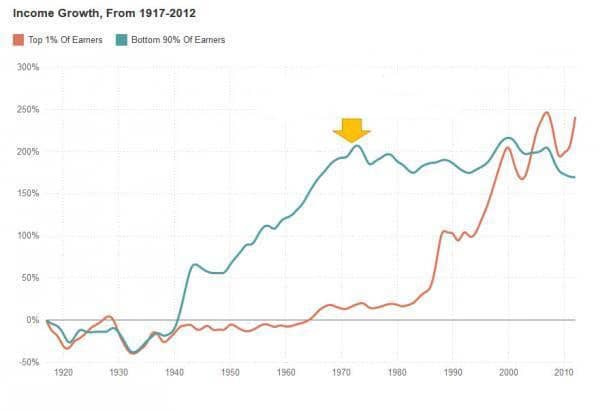
The are various other apparent anomalies that the article has outlined. One message that emerges is, that the shift that took place in 1971 opened the door for the neoliberal transition that occurred in the 1980s under Thatcher and Regan.
Another shock that hit the Nixon administration in 1973 was a sharp rise in oil prices. This was directly linked to the Yom Kippur War, whereby Arab states attacked Israel in response to Israel’s invasion of Arab and Palestinian territories in 1967. As this article from Yale notes:
the Arab state members of the Organization of Petroleum Exporting Countries (OPEC) declared that they would cut oil production, and limit exports to certain countries, to protest the United States’ support for Israel in the Yom Kippur War. American policymakers believed that this decision, which they called an “embargo,” would raise the market price of oil as supplies diminished and would lead to shortages of oil in the United States.
At the time the US was a net importer of oil. The crisis caused fuel shortages and an economics slowdown, not just in the US, but globally. As the article sums up:
President Nixon responded to the energy crisis by instituting a strict rationing program. In hindsight, this rationing program had more drastic effects at home than did OPEC. The image of Americans waiting in long lines at the pump for gasoline symbolized the end of a post-World War II era of economic growth and prosperity and a new, uncertain future. President Carter directly addressed this uncertainty in an address he delivered to the public in 1979, which came to be known as the “crisis of confidence” speech. At the same time, Americans’ understanding of the threat of “foreign oil” dovetailed with existing racist ideas about the Arabs and the Middle East, and U.S. popular culture produced a number of racist depictions of foreign oil producers taking advantage of the American public.
There was a notable positive outcome during Nixon’s tenure. That was a thawing of the cold war through the process of Détente, which as well as improving relations with the USSR also led to greater engagement with China, following a visit there by Nixon. These actions were taken relative to pressures from the Vietnam war.
The Church Committee
The Church Committee was a US Senate select committee that in 1975 investigated abuses from US intelligence agencies, that included the CIA and the FBI. It was named after its chair, Idaho Senator Frank Church (D-ID). In particular it exposed dirty tricks and abuses from the CIA, which was rife within the organisation. The findings of the committee were published in a series of reports, which can be found at the Assassination Archives and Research Center (AARC). Some of the cases I’ll outline below.
The first, Operation MKULTRA, was an illegal program designed to develop procedures and identify drugs that could be used to weaken individuals and force confessions through interrogation techniques of brainwashing and psychological torture. The logic behind this was the threat of foreign adversaries using chemical or biological agents on Americans. Programs began in the late 1940s and early 1950s, using volunteer subjects. However these then migrated to testing in unwitting, nonvolunteer human subjects. Most people within the system were unaware of the program, including Congress. The CIA Inspector General at the time noted that (Book 1):
"the knowledge that the Agency is engaging in unethical and illicit activities would have serious repercussions in political and diplomatic circles and would be detrimental to the accomplishment of its missions."
The report makes this damning comment:
The research and development program, and particularly the covert testing programs, resulted in massive abridgments of the rights of American citizens, sometimes with tragic consequences. The deaths of two Americans can be attributed to these programs; other participants in the testing programs may still suffer from the residual effects. While some controlled testing of these substances might be defended, the nature of the tests, their scale, and the fact that they were continued for years after the danger of surreptitious administration of LSD to unwitting individuals was known, demonstrate a fundamental disregard for the value of human life.
In effect the CIA had incorporated plausible deniability by changing procedures to suit their agenda.
A major operation conducted by the FBI was COINTELPRO, an abbreviation for Counterintelligence Program. This article from Grunge covers an overview of the program, which ran from 1956 to 1971. It stemmed from the communist McCarthyite witch-hunts, but expanded to include civil rights activists, anti-war activists, or anything else regarded as "subversive". The Church Committee report had established that most of their activities were illicit. Essentially the program compiled a black list of thousands of suspects who had been surveilled. The article notes:
COINTELPRO tactics ranged from fake propaganda to active encouragement of violent attacks by their agents. In the end, the total number of people who suffered due to their campaign of terror is unknown.
One famous target was Martin Luther King Jr.:
whom the FBI repeatedly tried to discredit. According to the Hampton Institute, the FBI surveilled and harassed King in a variety of ways, ranging from wiretapping to anonymous letters urging King to commit suicide. One of the letters, obtained through the Freedom of Information Act, read, "There is but one way out for you. You better take it before your filthy, abnormal fraudulent self is bared to the nation."
Black Panther members were murdered by COINTELPRO, with the assassination of Fred Hampton a particularly high profile example. The FBI was finally exposed when:
In March 1971, the leftist organization Citizens' Committee to Investigate the FBI broke into an FBI office in Pennsylvania, seized documents, and distributed them to media outlets, giving the public its first official glimpse at COINTELPRO. The organization took almost every document they found in the office and, according to "COINTELPRO: The Untold American Story," "subjected the FBI to what the FBI has been habitually subjecting political dissidents to throughout the course of its history."
In 2014, the documentary film 1971 covers the break in.
Another scandal noted was "The Family Jewels", declassified in 2007 and available at National Security Archive. It catalogues how the CIA:
violated its charter for 25 years until revelations of illegal wiretapping, domestic surveillance, assassination plots, and human experimentation led to official investigations and reforms in the 1970s.
The ‘Jewels’ are effectively a compendium of CIA activities from the 1950s to 1970s, prompted by Watergate, given that two of the burglars involved in the break-in were CIA agents. Some of the points revealed in the report had already come out during the 70s. One fascinating revelation was how the CIA worked in collusion with the Mafia to assassinate Fidel Castro. As this brief overview by the Washington Post notes:
in August 1960, the CIA recruited ex-FBI agent Robert Maheu, then a top aide to Howard Hughes in Las Vegas, to approach mobster Johnny Roselli and pass himself off as the representative of international corporations that wanted Castro killed because of their lost gambling operations.
Roselli became involved because the Mob was ejected out of Cuba following the revolution. He therefore had a bone to pick with Castro. He was high ranking member of the Mafia, having served under Al Capone during the prohibition years. He had several convictions under his belt. The plot to assassinate Castro is outlined in detail on page 12 of the main report. In August 1976, Roselli was found dead, sealed and chained in a 55-gallon oil drum, floating off the coast of Florida, certainly the victim of a Mob assassination.
In 1976, with the Vietnam War and Watergate fresh in Americans minds, there was a change of administration. Democratic president Jimmy Carter came to power. His administration was relatively uneventful, until 1979, when dramatic events in the Middle East would explode to haunt Carter until Ronald Reagan came to power in 1981.

